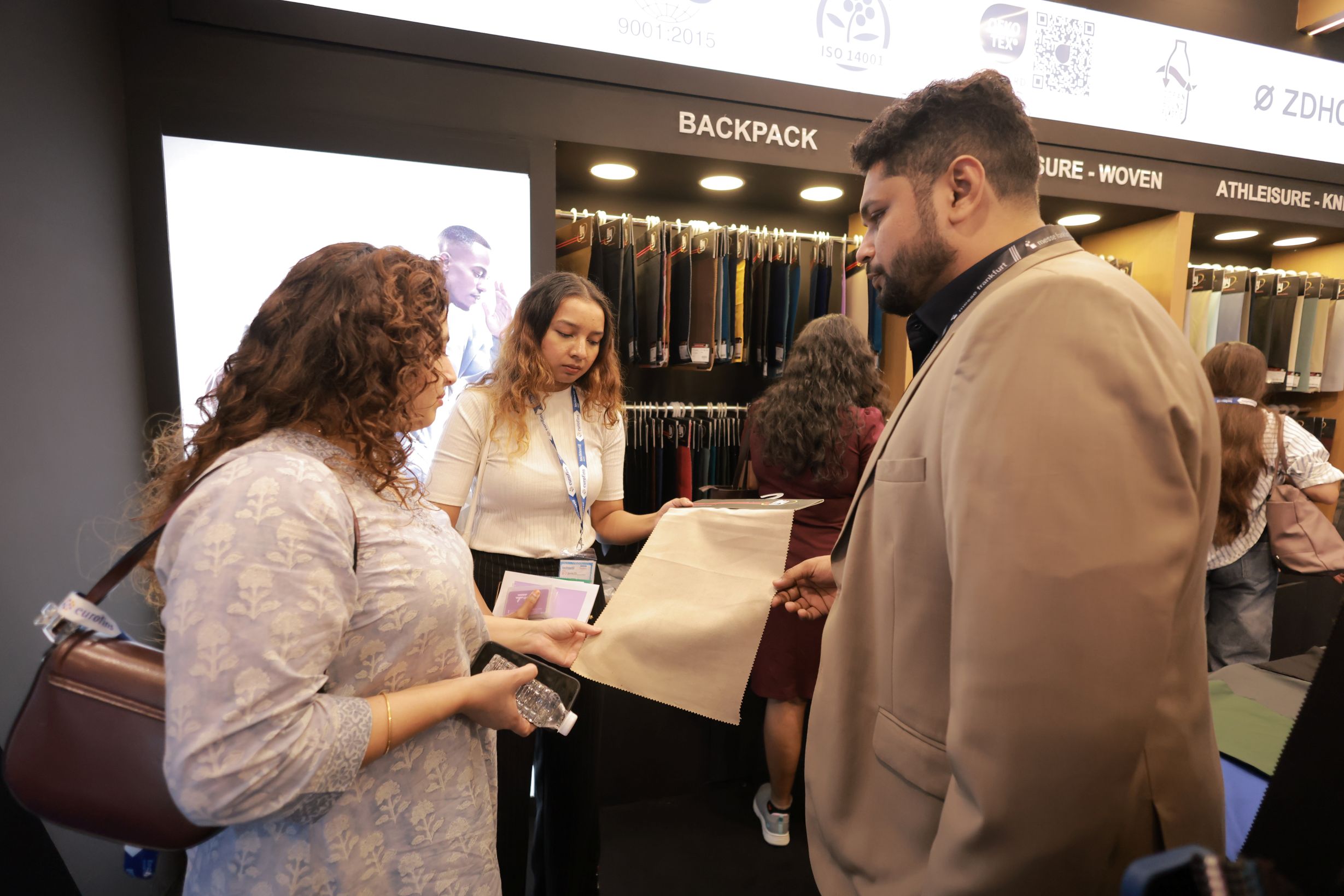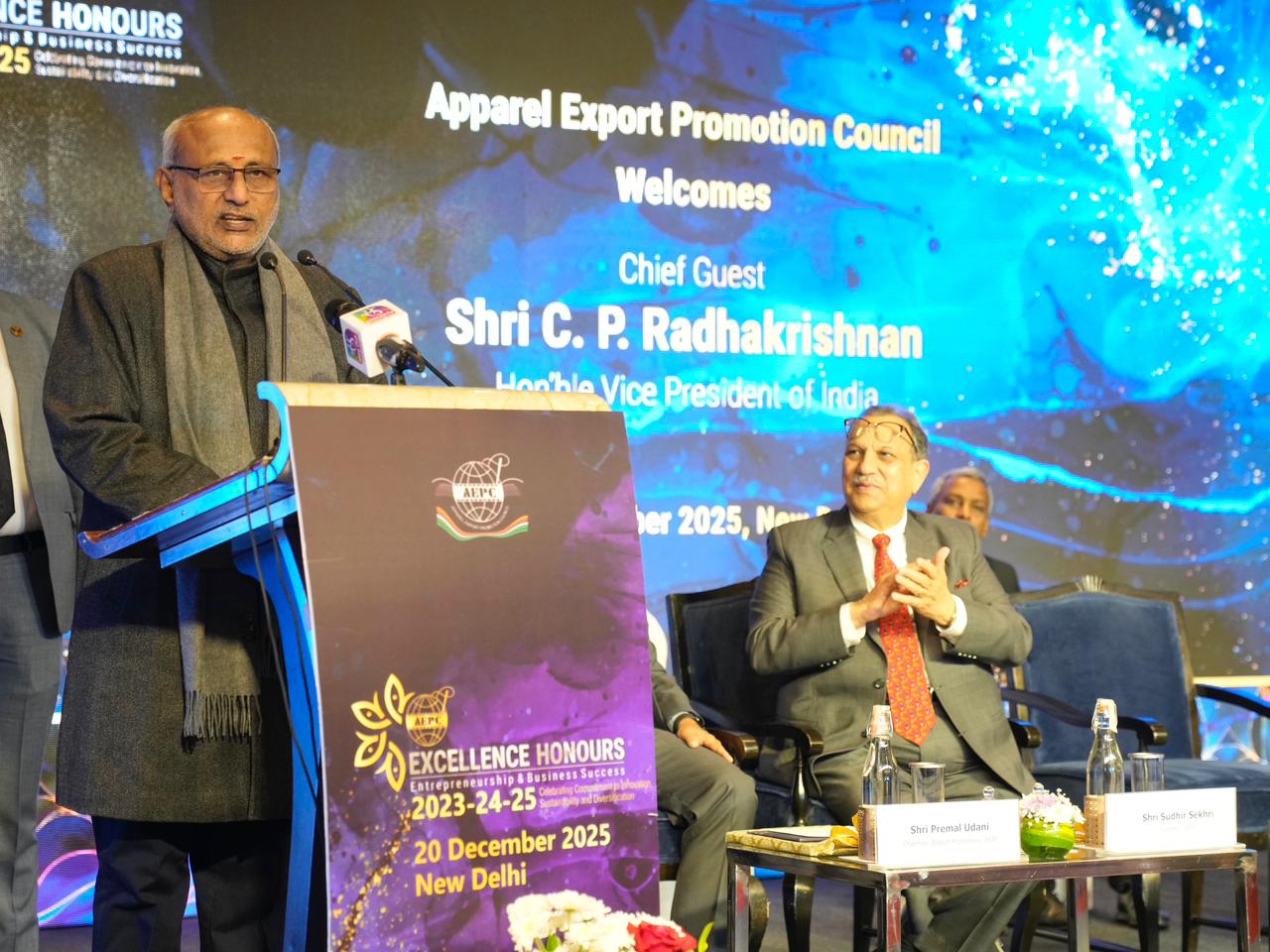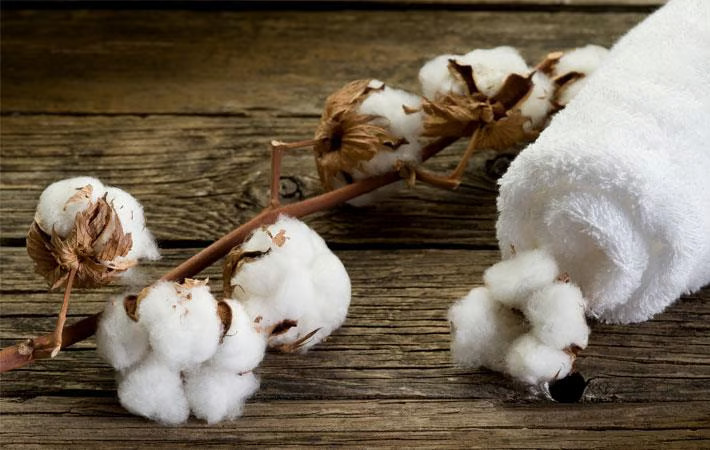FW
The Better Cotton Initiative (BCI) is launching a new biochar pilot project in India in collaboration with climate-tech startup Planboo. The project aims to boost soil health, make farms tougher, and create new ways for cotton growers to earn income from carbon credits.
According to BCI officials, the pilot will test out scalable, farm-level production of biochar using agricultural waste. Often compared to a charcoal-like soil additive, Biochar is becoming a key tool for regenerative cotton farming because it improves soil structure, holds onto nutrients better, and increases water-holding capacity.
Highlighting biochar's major role in long-term carbon removal, climate experts suggest it contributes to about 92per cent of global carbon removals and could potentially store an estimated 6 per cent of annual greenhouse gas emissions in the long term. BCI expects these climate advantages to open up new carbon monetization paths for India's smallholder cotton farmers.
For the pilot, farmers will be trained on how to produce biochar, handle it safely, and apply it to the soil. Planboo’s digital monitoring system will help collect data on soil carbon levels, crop performance, and overall environmental results. BCI plans to evaluate these results to scale the model across other cotton-growing regions.
Bangladesh’s cotton industry is expected to watch the outcomes closely. Biochar applications could provide long-term benefits for restoring soil and improving farm sustainability in water-stressed areas. Industry analysts believe these kinds of regenerative approaches will support Bangladesh’s focus on circularity and climate-resilient agriculture goals.
Bangladesh’s RMG exports to non-traditional markets declined by 3.39 per cent Y-o-Y during July–November of the FY25–26. This downturn in alternative destinations - markets outside the EU, US, Canada, and the UK- signals mounting challenges in diversification strategy, market positioning, and policy support. Non-traditional markets account for approximately 16 per cent of the country's total apparel exports.
Data from the Export Promotion Bureau (EPB) highlights sharp contractions in several key non-traditional destinations. Exports to Australia, Bangladesh’s largest alternative market, contracted 10 per cent Y-o-Y to $313 million. Shipments to India dropped by over 8 per cent to $298 million. Other major declines included South Korea (-12 per cent), Mexico (-16 per cent), Turkey (-25 per cent), and Russia (-23 per cent).
Industry leaders attribute this contraction to several factors: sluggish global consumer demand, weak institutional marketing, limited product diversification for specific markets, and a significant reduction in government export incentives. Shehab Udduza Chowdhury, Vice-President, BGMEA, notes, poor marketing, lack of continuous follow-up, and the decrease in cash incentives hurt performance. The government previously offered a 5 per cent cash incentive for new market shipments, which has now been cut to 2 per cent, significantly discouraging exporters amid rising operational costs.
In contrast, traditional markets showed relative resilience. Garment exports to the United States rose by 3 per cent to $3.22 billion, and shipments to Canada and the United Kingdom grew by 6.51 per cent and 3 per cent respectively. The European Union remained the largest regional market, though results were mixed, with growth in Spain and Poland offset by declines in Germany, France, and Italy.
Despite the overall slowdown in non-traditional exports, niche markets like China, Japan, Brazil, and South Africa showed growth, suggesting that targeted strategies can still be effective. Trade analysts emphasize the urgent need for renewed policy incentives, market-specific product development, and stronger commercial diplomacy abroad to prevent Bangladesh from losing further ground in competitive global sourcing.
Global apparel manufacturing giant Hirdaramani Group has reinforced its leadership position in sustainability by launching the Mihila Concept Store, which directly translates its low-impact factory practices into a consumer retail experience. This strategic pivot into direct-to-consumer sustainability education comes shortly after the company became the first in Sri Lanka to receive Net-Zero Science Based Targets initiative (SBTi) approval in 2024. This approval mandates a concrete plan to reduce absolute Scope 1 and 2 greenhouse gas (GHG) emissions by a massive 54.6 per cent by 2033. The physical store allows consumers to directly engage with the outputs of its sustainable manufacturing base, which already sources a substantial 75 per cent of its energy from renewable sources - a rate significantly higher than the industry average.
Mitigating carbon tariffs with green credentials
This retail initiative is crucial as the group, which operates across South Asia, Africa, and recently expanded to Egypt in 2025 (a market seeing a 22 per cent surge in garment exports), prepares for the challenges outlined in its upcoming Future First 2.0 Roadmap (2026–2030). Chief among these challenges is mitigating the growing risks of carbon tariffs from major buying markets like the EU. By showcasing its Mihila Tex facility (a case study in minimal-impact, waste-reducing manufacturing) and achieving verifiable certifications like the SBTi, Hirdaramani is securing its global market access and accelerating its shift towards circular textile practices, positioning green credentials as a competitive advantage. Dr. Leonie Vaas, General Manager Group Sustainability, remarks, the concept store makes the measurable reality of reduced impact tangible for the ethical consumer.
A century-old global apparel manufacturer providing end-to-end solutions, from design to delivery, the Hirdaramani Group operates a global footprint spanning Sri Lanka, Bangladesh, Vietnam, Ethiopia, and Egypt. It specializes in apparel (knitted and woven garments), fabric (dyeing and finishing), and e-commerce. Hirdaramani is internationally recognized for its deep commitment to sustainability, holding over 11 LEED certifications for its green factories. Its core focus is the ‘Continuous Progression, Together’ purpose, centered on reducing environmental impact (targeting a 54.6 per cent reduction in Scope 1 and 2 GHG emissions by 2033) and enhancing social well-being across its multi-country operations.
The PM Mega Integrated Textile Region and Apparel (PM MITRA) Park in Dhar, Madhya Pradesh, is rapidly transitioning from concept to a global production powerhouse, confirmed by investment proposals exceeding Rs 20,000 crore from over a hundred leading textile firms.
The park’s unique advantage is its strong backward linkage to agriculture, as Madhya Pradesh is the largest contributor to India’s organic cotton production, accounting for 43 per cent of the national output. This organic supply provides a critical, sustainable raw material edge, which is currently in high global demand.
Inditex partnership: A green value chain
Owner of brands like Zara, the Inditex Group has actively engaged with the state, exploring a partnership to anchor a sustainable, ESG-certified value chain within the Dhar park. This potential collaboration aligns perfectly with Inditex’s commitment to source 100 per cent of its raw materials from sustainable sources by 2030 and its existing efforts on regenerative agriculture in the region.
The state is accelerating this interest through policy incentives, including a massive 90 per cent subsidy on land and 40 per cent capital assistance for machinery, designed to attract global supply chain leaders. The overall project is expected to generate 3 lakh employment opportunities, transforming Madhya Pradesh's annual textile exports, currently over Rs 7,000 crore, toward a new high.
Inditex (Industria de Diseño Textil S.A.) is one of the world's largest fashion retail groups, operating eight major brands globally, including Zara, Massimo Dutti, and Bershka. It is renowned for its fast-fashion business model, which relies on a highly integrated and responsive supply chain. Inditex is a leader in setting ambitious sustainability targets, aiming for net zero emissions by 2040 and focusing on circularity, water management, and the use of preferred fibers, including organic and regenerative cotton.
Shifting away from a single, centralized ‘international market hub,’ the Textile Ministry is prioritizing a comprehensive 40-country market diversification strategy.
This decision is rooted in the belief that a decentralized, targeted approach across high-potential global destinations will be more effective in accelerating the country’s textile and apparel exports, which currently stand at approximately $40 billion, toward the ambitious target of $100 billion by 2030.
The finalization of 15 Free Trade Agreements (FTAs), including the recent India-UK CETA, aims to drastically reduce tariff barriers and simplify procedures, making Indian exports immediately more competitive. This new approach complements the ongoing development of the seven PM MITRA Parks, which are creating world-class, integrated production ecosystems from spinning to garmenting, providing a modern, plug-and-play base for manufacturers. Confirming this focus, Pabitra Margherita, Minister of State for Textiles, highlighted, schemes like RoSCTL and RoDTEP continue to provide vital rebates on embedded taxes, benefiting over 15,000 exporters in FY 2024–25.
The new roadmap is a direct response to the urgent need to close the cost and productivity gap with regional rivals like Bangladesh and Vietnam. By signing FTAs and adopting a diversified market strategy, India seeks to attract major global brands currently looking to diversify their supply chains.
A flagship initiative of the Government of India, the PM Mega Integrated Textile Regions and Apparel (PM MITRA) Parks Scheme was approved with an outlay of Rs 4,445 crore. It aims to establish seven world-class integrated textile parks across the country to create a 'Farm to Foreign' value chain, offering a reduction in logistics costs and improved competitiveness. The parks will provide plug-and-play infrastructure and common facilities, focusing on Man-Made Fibers (MMF), technical textiles, and boosting employment in the sector.
UK’s leading fashion and lifestyle trade show, Scoop is returning to Olympia National from February 8–10, 2026, with a strong focus on discovery, welcoming an exciting roster of new global designers.
Recognized for its gallery-like atmosphere, premium edit, and ability to introduce labels before they break into the wider market, Scoop remains the definitive destination for fashion buyers seeking fresh talent and originality.
The new wave of UK and international talent at the trade show has been personally selected by Karen Radley, Founder and Curator. The show features several first-time exhibitors this season. These include Belsize 25, Girlfriend Collective, Par Y Escala, CCDK, Lalide a Paris, The Keep and Van Den Abeele. These new exhibitors offer an invigorating mix of aesthetics, from beautifully crafted contemporary womenswear to distinctive lifestyle pieces.
Scoop’s commitment to presenting emerging talent ensures that buyers encounter something truly original and commercially compelling each season. With its intimate layout and design-led presentation, the show provides the clarity and inspiration retailers need to confidently curate their collections.
The upcoming edition promises a dynamic and inspiring showcase, reinforcing Scoop's position as the UK’s primary source for new and noteworthy fashion.
Louis Vuitton appointed rising American actress Chase Infiniti as its newest House Ambassador. Born in Indianapolis, the 25-year-old has quickly become a standout performer in Hollywood following her acclaimed roles in David E. Kelley's 2024 series ‘Presumed Innocent’ and Paul Thomas Anderson’s film, ‘One Battle After Another,’ released this year.
Infiniti’s explosive debut has earned her significant recognition, including a 2025 Gotham Award nomination for Breakthrough Performer, a 2026 Golden Globe nomination for Best Performance by a Female Actor in a Motion Picture – Musical or Comedy, and a 2026 Critic’s Choice Award nomination for Best Actress. The actress is next set to appear in the sequel to ‘The Handmaid’s Tale,’ ‘The Testaments,’ scheduled for release in April next year.
Praising its new collaborator, Louis Vuitton says, Chase Infiniti perfectly embodies Louis Vuitton’s powerful and timeless femininity, reflecting the shared values that unite her with the house. Through her artistry, she brings to the house a rare balance of youthful dynamism and forward-looking vision.
This is not the first collaboration between Infiniti and the LVMH-owned brand. The actress attended the last two women’s runway show - the Fall-Winter 2025 and Spring-Summer 2026 collections - by Nicolas Ghesquière, Artistic Director of women's collections. She was also seen wearing a custom Louis Vuitton champagne satin hand-embroidered gown, inspired by an 1860 archive piece, at the world premiere of her film "One Battle After Another" in September.
Infiniti joins a star-studded global roster of Louis Vuitton ambassadors that includes major figures across fashion, music, and sports, such as Zendaya, Pusha T (under Pharrell Williams’s direction for men's), K-pop stars J-Hope, Lisa, Felix, Jackson Wang, and top athletes like Victor Wembanyama and Carlos Alcaraz.
The parent company of Zara, Bershka, and other major fashion brands, Inditex closed 132 stores globally as of October 31, 2025, according to its nine-month fiscal 2025 earnings report. The company ended the quarter with a total of 5,527 physical locations, confirming its strategy to streamline operations and enhance long-term profitability through digital and physical integration.
Inditex has been executing a large-scale modernization plan, investing approximately €900 million ($1.05 billion) annually to upgrade logistics, renovate existing units, and strategically relocate or open stores in high-traffic, high-potential areas.
Despite the overall net reduction in store count, certain brands did expand their physical presence: Lefties added 10 new stores, and Bershka opened four new locations.
The company’s optimization strategy appears to be successful on the bottom line. Total sales increased 2.7 per cent to €28.2 billion ($32.82 billion), driven primarily by strong customer satisfaction across both its in-store and online channels.
Groka Garcia-Tapia, Director-Investor Relationa, Inditex notes, the company’s store sales have been strong, online sales have been great. Early fourth-quarter results show continued momentum, with Autumn/Winter collections driving a 10.6 per cent rise in sales from November 1 through December 1.
Inditex is heavily investing in digital integration within its physical stores, highlighted by the growing adoption of self-checkout technology. Some flagship stores are reporting nearly 90 per cent of transactions processed through automated kiosks, a significant jump from 30 per cent at Zara earlier in the year.
Kate Hardcastle, Consumer Expert Contributor, Forbes notes, Inditex’s major strength is its omnichannel integration, which is critical for meeting the growing consumer demand for flexibility in how they shop. Similarly, Jon Copestake, Consumer Senior Analyst, EY Global warns, companies cutting their store footprints too drastically risk missing a significant trick, as stores remain valuable assets in the modern retail ecosystem.
The closures reflect a broader industry trend toward optimizing physical space in response to global e-commerce growth, while still acknowledging that most consumers currently prefer in-person shopping.

When ChatGPT unveiled its Instant Checkout capability allowing users to discover, evaluate, and purchase products within a single conversational interface it was more than a feature release. It was a signal that the very foundations of digital commerce are shifting. Retail’s long-standing search-and-scroll paradigm is giving way to a fluid, AI-driven shopping continuum where discovery, decision-making, and transaction collapse into a single stream of dialogue.
For decades, e-commerce was built on keywords, filters, catalogues, and comparison tabs. The consumer journey was logical but laborious. Now, with conversational AI transforming into a transactional layer, the retail experience is being reimagined as something far more human, intuitive, and anticipatory. What we are witnessing is the emergence of the world’s first ‘AI shopping mall’ a place where the storefront, the salesperson, the stylist, the cashier, and the supply chain all merge into a single generative system.
From chatbots to commerce engines
The idea of talking to a computer to shop is not new. Retailers experimented with simple chatbots almost a decade ago, but these early tools were rigid and easily confused. Today’s systems, however, are built on multimodal models that parse language, visual cues, sentiment, and context simultaneously. What was once a novelty is now an operational pillar for global retailers.
Amazon’s AI-driven recommendation engine remains one of the most sophisticated examples in the industry, contributing an estimated 35 per cent of its sales. Meanwhile, fast-fashion platform Shein has quietly built a predictive engine that analyses browsing behavior, social sentiment, and even image preferences to forecast what a customer will want weeks before they articulate it. This is personalization in its most dynamic form, where the system becomes a stylist, merchandiser, and trend predictor all at once.
What distinguishes generative AI from previous generations is its capacity to synthesize, not just retrieve answers. It doesn’t simply show what others bought; it understands the customer’s intent and constructs entirely new recommendations, outfits, or shopping journeys in real time.
The virtual fitting room goes mainstream
One of the most stubborn hurdles in online retail has been the absence of tactile experience. You cannot feel fabric, test lipstick shades, or check the drape of a dress. Yet, AI is dissolving even these barriers.
Sephora’s Virtual Artist, Google’s AI try-ons for apparel, and Amazon’s visual search tools are reshaping how consumers bridge physical imagination with digital reality. By layering facial recognition, digital draping, and real-time rendering, these tools allow shoppers to preview makeup, experiment with hair colors, or test apparel silhouettes with surprising accuracy. For retailers, the payoff is substantial: higher conversion, lower product returns, and stronger consumer confidence.
Platforms like Zalando, Myntra, and Shopify-powered brands are increasingly integrating generative visual engines that adjust product imagery to diverse body types or skin tones. This is not merely a technical upgrade; it is a cultural shift toward more inclusive commerce, where consumers finally see themselves accurately reflected online.
Content that writes itself
The retail world publishes millions of product descriptions, advertisements, and SEO assets each year. Traditionally, producing such content was a slow and expensive process. Generative AI has collapsed that cycle dramatically. Brands now use AI to spin up hundreds of product descriptions that adapt to tone, language, and context. A single piece of creative can generate countless micro-variations of ads optimized for different platforms or demographic groups. For global brands, it ensures coherence. For smaller brands, it levels the playing field by eliminating a previously costly barrier to scale.
Some retailers are already using generative models to design entire campaigns from storyboard concepts to captioned videos reducing time-to-market by weeks. In a sector defined by fast-changing trends, speed is not just an advantage; it is survival.
AI in supply chains and operations
Beyond the glossy front-end experiences lies an equally transformative story in retail’s back rooms. AI-driven demand forecasting has become the quiet backbone of inventory management. Walmart’s sophisticated models process historical sales data, local events, weather fluctuations, and economic indicators to predict what will sell and when. This helps avoid stockouts and reduces wastage critical for perishable categories but increasingly important in fashion, where overproduction has long been a structural problem.
ChatGPT-like negotiation bots now assist with supplier conversations, turning what was once a lengthy, human-led process into a streamlined, data-driven exchange. Carrefour’s digital assistant, for example, not only recommends recipes to consumers but also helps the retailer plan procurement more efficiently. Walmart’s in-store AI assistant ‘Ask Sam’ is proving how a single tool can enhance productivity for both shoppers and floor staff.
The result is a retail ecosystem where operational intelligence becomes continuous, adaptive, and increasingly autonomous.
Dawn of a new shopping paradigm
The speed at which consumers have embraced conversational search is perhaps the clearest indicator of the shift ahead. Major retailers report that customers using AI interfaces convert faster, browse longer, and purchase more items on average. Conversational commerce, once dismissed as a niche, is becoming a mainstream shopping behavior.
But the next leap will come from agentic AI, systems that don’t wait for instructions but proactively act on behalf of the user. An agentic retail AI could track a customer’s wardrobe, remind them when staples need replacing, suggest additions to maintain a capsule collection, or automatically compare prices to secure the best deal. For retailers, agentic AI can dynamically adjust pricing, personalize homepage layouts, and optimize marketing spend in real time based on user behavior. The borderlines between a search engine, a personal stylist, and a marketplace are dissolving. Retail is no longer a destination you visit; it is a service that accompanies you everywhere.
The future of retail is no longer store-led
As generative AI weaves itself deeper into every layer of the retail value chain, the industry is quietly undergoing its most significant reinvention since the rise of e-commerce. The mall is no longer a physical space or even a website. It is an intelligent, conversational network of algorithms designed to understand consumer intent and deliver solutions instantly. Retailers who embrace this shift will find themselves operating in a world where personalization is real-time, operations are self-optimizing, and the customer journey is no longer linear but continuous. Those who resist risk becoming relics of the search-and-scroll era.
The new shopping mall is already here. It is everywhere, accessible through a single conversation, and built not with glass and concrete but with generative intelligence. The question for the industry is no longer whether AI will reshape retail it is how quickly retailers can redesign themselves to thrive in an agentic, conversational, AI-first world.
The Indian government is reportedly drafting a new set of mandatory labeling rules for apparel and home textiles sold domestically.
The regulations are intended to ensure greater transparency and standardization for consumers regarding the composition and quality of textile products. Currently being finalized by the Ministry of Textiles and Bureau of Indian Standards (BIS), these new rules will likely require manufacturers to clearly display information on accurate percentages of all fibers used, standardized symbols and instructions for washing, drying, and ironing and the country of origin for the final product.
This move is a part of the government's broader initiative to improve the quality of goods sold in the domestic market, protect consumers from misleading labeling, and streamline trade standards for Indian manufacturers.












